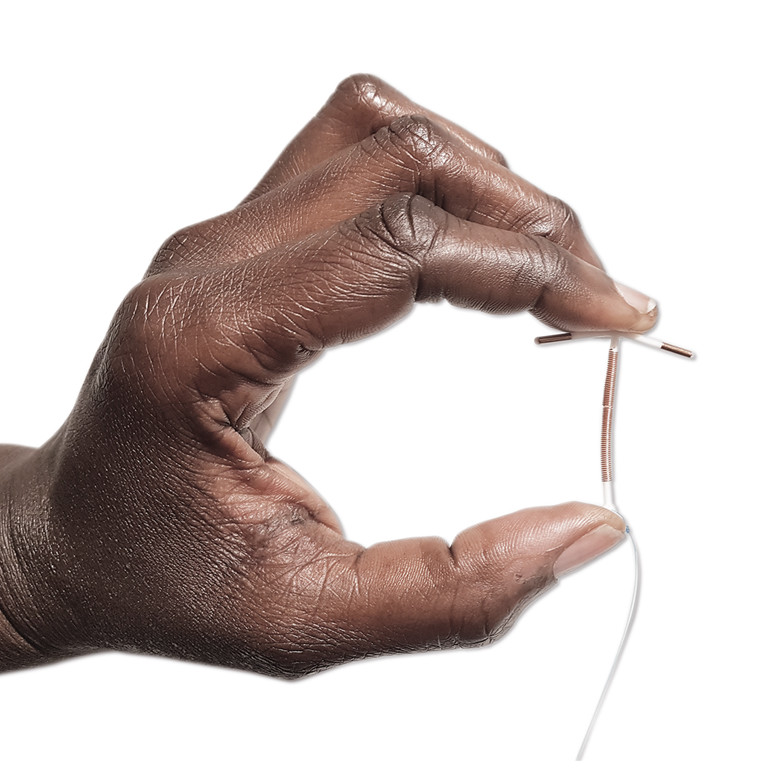
Emergency Copper Coil (IUD)
The most effective emergency contraception method
The copper coil is a flexible T-shaped device made of plastic and copper.
It can be placed in the womb by a doctor or nurse up to 5 days (120 hours) after unprotected sex (or up to 5 days after the earliest estimated date of ovulation). When in my cycle is emergency contraception effective?
Inserting the IUD takes 10-15 minutes.
The copper IUD can be kept in until your next period or used for ongoing contraception for up to 10 years if it suits.
Removing the IUD is usually very simple.
How effective is the IUD as emergency contraception?
The IUD is the most effective method of emergency contraception - fewer than one in a thousand will become pregnant
Where can I get the copper IUD?
- Sexual health clinics
- Some GP Surgeries
- Young peoples clinics e.g. Brook
Find an NHS sexual health clinic - contraception is free in the UK National Health Service
Ask for an emergency appointment for an IUD fitting
Positives
- The copper IUD is the most effective emergency contraception method, more than 99%effective
- Can be used up to 5 days after unprotected sex or up to 5 days after ovulation
- The only method which can be effective after ovulation
- Does not contain hormones
- Can be used at any age
- Can be used by someone who has never been pregnant
- Can be kept in as ongoing contraception
Negatives
- Requires a clinic visit
- Requires an internal examination
- Can be painful to fit
- No protection against STIs
- Not recommended within 28 days of giving birth
How does it feel to have an IUD fitted?
Everyone is different, but it is common to experience:
- Pain when the IUD is being fitted
- Stomach cramps for a few days after fitting
- Spotting/bleeding - seek advice if this persists
- Occasional cramps for a few months
- Periods which are longer and heavier than on hormonal contraception
- More period pain than on hormonal contraception
Ask what the clinic offers as pain relief
You can take anti-inflammatory painkillers before insertion and for a few hours afterwards
If you are anxious about being examined, ask to discuss this with the doctor or nurse beforehand
Many people find the procedure more straightforward than they imagined
What's involved in IUD or IUS fitting?
Copper IUD for ongoing contraception:
The IUD is convenient and very reliable.
It lasts 5 to 10 years, but can be taken out at any time.
The IUD does not cause infertility
Fertility returns to normal immediately after having the IUD taken out.
You can't feel the IUD during penetrative sex.
If a partner can feel the threads, they can be trimmed so they are shorter.
The IUD is very discrete.
The pattern of periods is not affected by the IUD.
If periods are heavy or painful, this can be treated by medication
The IUD can come out (especially in the first three months - 1 in 20 chance)
Good to know
The IUD has no hormones and is very reliable.
The IUD can be painful to put in, but pain relief such as gas and air can help.
The IUD lasts for up to 5 to 10 years (depending on the type) if you want to keep it in.
The IUD is usually easy to remove.
IUD fitting - what's involved?
How much effort is the IUD?
The IUD is put in by a doctor or nurse. It takes about 10 to 15 minutes to put in.
The fitting can be painful, and it’s common to have some pain and bleeding for a few days and occasional cramping for a few months.
It's important to make sure a that there is no possibility of pregnancy before it's put in. A doctor or nurse will check this.
How effective is the IUD?
The IUD is the most effective method of emergency contraception - fewer than one in a thousand people who use it as emergency contraception will become pregnant.
How does it work?
The IUD is made of plastic and copper. The copper stops the sperm and egg from surviving inside the womb and fallopian tubes, so sperm cannot fertilise an egg.
When the IUD is removed, you can get pregnant with no delay.
The IUD itself can't be felt by the user or partners because it lies right inside the womb.
Two nylon threads sit in the cervix (high up inside the vagina), and partners can occasionally feel the threads but not the IUD itself.
Periods may be heavier, longer and more painful than with hormonal methods. This can be helped with medication taken during periods.
